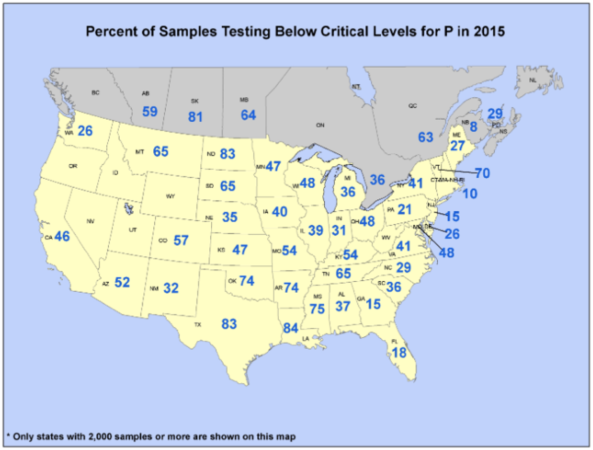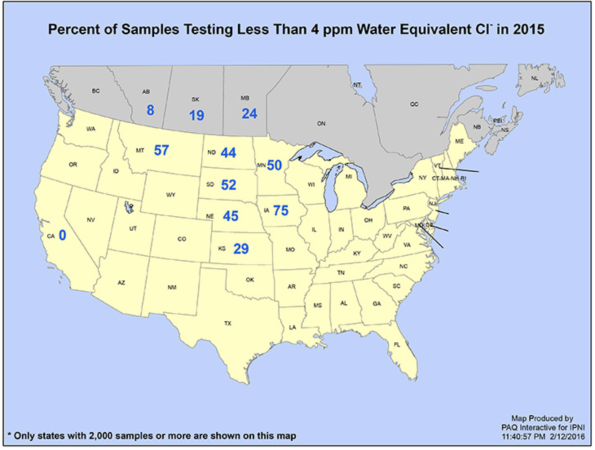
News
Fertility and Nutrients
Sponsored
Building a soil nutrient bank to maximize yield potential
October 25, 2021 By Stefanie Croley
With low commodity prices the last couple of years it is understandable that some growers reduced their fertilizer application volumes to save money. In this same timeframe in a lot of areas, we were able to pull some really good yields that could have removed a fair amount of your available nutrients. With commodity prices now on the rise it could be a good time to address your soil nutrient bank.
The following maps represent soil-test data compiled and summarized by The Fertilizer Institute (TFI) from millions of samples submitted by participating soil testing labs across North America.
Phosphate
This map shows the percentage of samples from each state testing below the critical phosphorus level for crop production. The critical level is the level above which response to additional fertilizer would not be expected according to university recommendations. In North Dakota for example, 83% of all the samples received show soil-test phosphorus levels below the critical level. Fields represented by these samples should be fertilized with phosphorus to achieve maximum economic yield.

Potassium
This map shows that in Wisconsin, 65 percent of samples tested below optimum in available potassium levels for crop production. Growers in Wisconsin should pay particular attention to soil-test potassium and fertilizer accordingly to avoid profit-robbing yield losses.

Chloride
Here is a chloride map (this comes from your KCl- potash fertilizers). For the labs that reported chloride, nearly 50 percent of samples came back below optimum. So even if you have close to optimum levels of potassium, an application of potash could still be beneficial. Cereal grains commonly produced in this region are particularly responsive to chloride fertilization.

What do we do with this information?
The first step is to take soil samples to determine your specific needs by field. Generally, a 40-acre composite sample may mask variability across the field and may not be fully representative of fertilizer needs for different areas of the field.
The second step is to consider the crop you are going to grow on these fields and fertilize them based on the needs of that crop and your realistic yield goals.
The third step is to take into account your soil-test readings and apply additional nutrients when needed, or practical, to build your residual soil levels over time to reach optimum levels. If soil nutrients have been depleted by high yields or insufficient past applications, this coming season could be a good time to consider replacing some or all of that depleted nutrient bank.
A good justification for nutrient buildup applications is to take advantage of the good growing conditions when they happen to maximize your yield potential. If you have marginal or deficient soil nutrient levels and have a year with great growing conditions, you don’t want to have your yield limited by available nutrients.
Since potassium and phosphate do not generally leach from these soils, it is not uncommon to apply enough of these nutrients to supply for a couple of years of crop rotation. Consider a period of time over which you wish to build soil nutrients and spread the additional cost over that number of years. Many universities have “build and maintenance” application schedules or strategies to help growers plan such programs. Years with good crop prices, like anticipated for 2021, may be the ideal time to invest in that soil nutrient bank.
Check out our nutrient removal calculators and soil-test inventory data for your province.